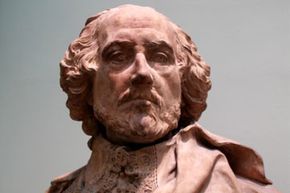Types of Poetry
Poetry can be divided into several genres, or categories. Not all poems fit neatly into a category, but to understand what poetry is all about, it's helpful to group poems based on some common characteristics.
Narrative poetry is poetry that tells a story. Just like a literary narrative, there's a plot or some sort of action taking place. One popular type of narrative poetry is epic poetry. An epic poem is a long narrative poem that usually follows the life and adventures of a hero. The ancient Greeks loved their epic poetry and produced great works that we are still fascinated by today, such as Homer's "Iliad" and "Odyssey."
Advertisement
Another genre is dramatic poetry. If you've ever read a play by William Shakespeare, you're reading dramatic poetry. Basically, dramatic poetry is written with the intention of being performed.
Lyric poetry is the type of poetry that comes to mind for most people when they think of what a poem is. Lyric poetry doesn't necessarily tell a story, have a plot, or follow a logical progression. It's more about using elements like rhyme and rhythm to create an overall effect or feeling. A good way to remember this is to think of lyrics in music, because at times, lyric poetry is set to music.
There are other genres that you could group poetry into, including satirical poetry and prose poetry, but in general, most poetry can be classified as either narrative, lyric or dramatic.
Now that you understand the main categories of poetry, let's look at how poems are constructed. A poet, like an artist, has many tools for crafting a poem -- each having a different effect on how the poem sounds, feels, looks and is read. In the next section, we'll explore some of the sound effects that can be used when writing a poem.
